Who’s that digging in my yard: Skunks, raccoons or moles?
Gain a better idea of which critter is digging up your yard or garden by the damage they cause.

The Michigan State University Extension Lawn and Garden Hotline and Ask Extension frequently receive questions from concerned homeowners asking, “What’s digging up my yard?” Damage often increases in the fall and spring, with animals driven by two primary motivations: food and shelter.
In the fall, animals are trying to gather as many calories as possible to make it through the winter. The fatter they are, the better their chances of surviving the cold, lean months. In the spring, after enduring harsh winter conditions, these animals are on the hunt for food to regain weight. Finding food is their highest priority but they may also be scouting for a safe place to live and raise their young. By observing the clues left behind, you can often determine which animal is responsible for the damage. Let’s explore the most common culprits and the telltale signs they leave behind.
Shallow holes in the ground surrounded by a ring of loosened soil
Skunks are nocturnal, so the soil disruption happens overnight (Photo 2). The holes, about the size of a skunk’s nose, are created when they dig for earthworms, grubs and other soil insects. The skunk presses its nose to the soil and digs with its long, front claws. A larger hole—and chunks of comb—may be found when a skunk digs up a below-ground wasp nest in late summer or fall. Skunks know that just below the surface is a protein-rich treat, just waiting to be harvested. In extreme cases, the ground may look tilled, with numerous small holes in the same area.
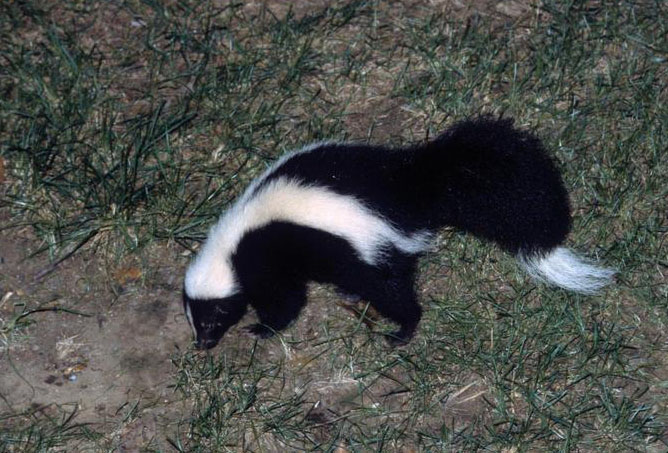
During the growing seasons, skunks are on the patrol for earthworms, grubs and a variety of soil insects. Their diets also include crayfish, small animals, birds, bird eggs, frogs and even turtle eggs. Omnivorous skunks also enjoy fruit like mulberries, raspberries, cherries and grapes. They cannot jump or climb, so they work close to the ground.
Chunks of sod that have been ripped up and flipped over
Raccoons enjoy diets that are almost identical to skunks, but raccoons use their front paws like hands to pull up and flip pieces of sod (Photo 3). This behavior is quite common on newly laid sod or grass that has shallow roots. It is common to find raccoons and skunks feeding in the same area, sometimes leading to a noticeable skunk odor when the skunk is disturbed by the more aggressive raccoon.
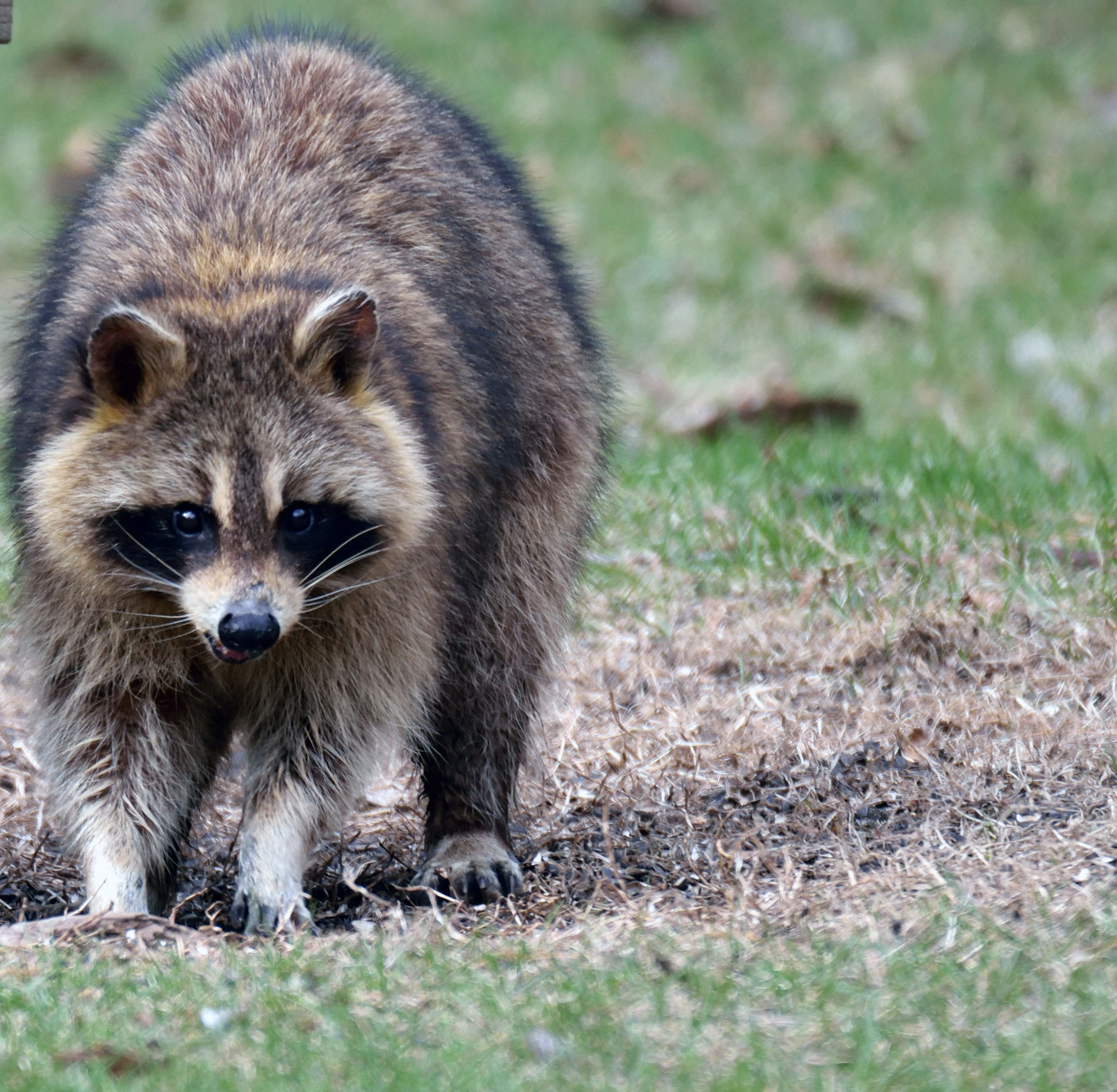
Mounds of loose soil on top of turf or trails beneath the turf
Moles forage for grubs, beetles and worms just below grass roots. Contrary to belief, they do not eat roots—they rely exclusively on invertebrates as food. Star-nosed moles leave piles of soil on the surface when they push up from below to create air vents (Photo 4). In warm weather, the star-nosed mole works about 6 inches or more below the surface. Star-nosed mole mounds are unsightly to some (and charming to a few of us) but do not cause lasting damage.
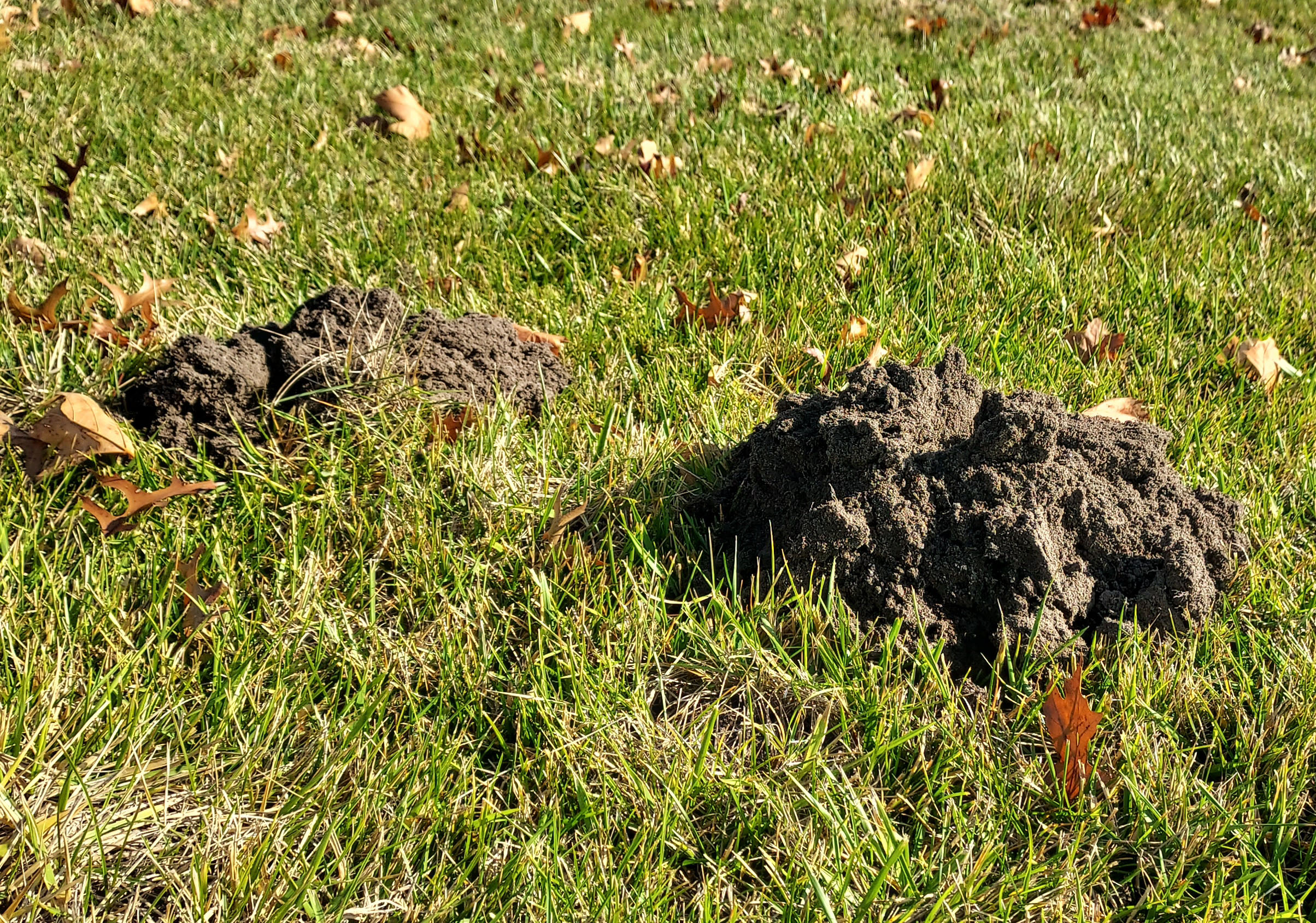
In contrast, eastern mole (Photo 1) tunnels are just below the lawn surface and leave a distinct trail (Photo 5), which can be pushed down by walking on it. Frequently used trails may be pushed up again within minutes or hours. Moles can damage gardens if they inadvertently push newly planted annuals or perennials out of the soil. While unsightly, mole damage is usually not long-lasting unless the grass above their tunnels dries out and dies.

During the winter when the ground is partially frozen, both kinds of moles may push up piles of soil when they are active (Photo 6). They are feeding on earthworms and possibly grubs and soil insects. Moles vary on how long they may remain in an area. When food resources dwindle, they may move on. For more information on moles, see the Michigan State University Extension article, “Moles in the lawn.”
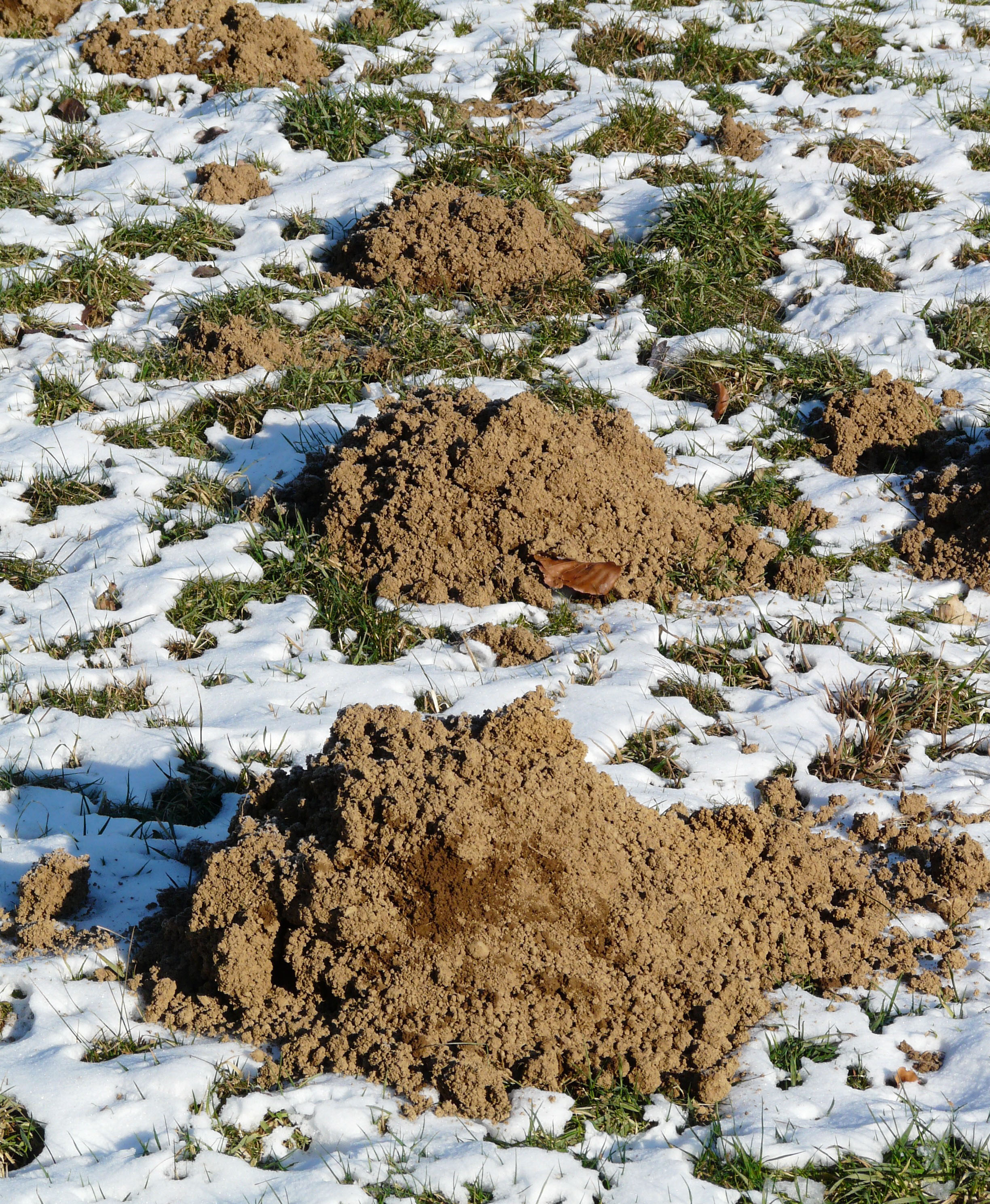
Heaps of loose soil and a large hole close to a structure
Groundhogs (Photo 7), also known as woodchucks or gophers, excavating dens can leave large mounds of soil and rocks near structures like sheds, garages and porches. They may also create burrows in raised garden beds or even large pots. Although groundhogs do not typically damage turf, they will feed on common plants found in lawns like clover, dandelions and plantain. They have voracious appetites and can quickly decimate a garden.
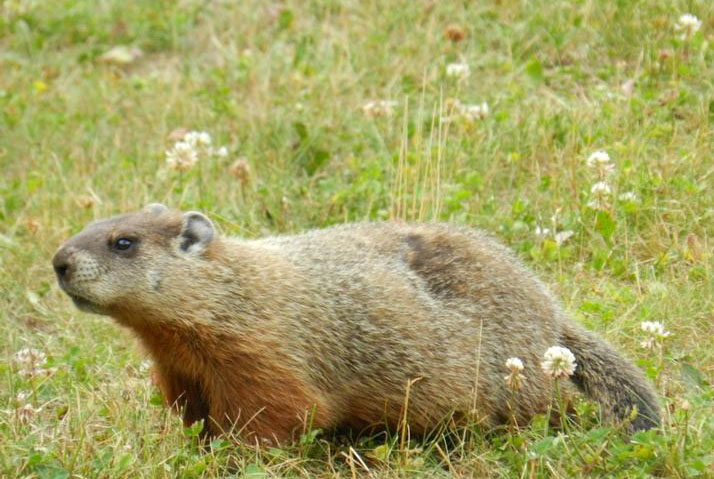
Small holes in lawns
Northern flickers are woodpeckers frequently seen feeding in lawns near wooded areas. They do not damage turfgrasses but they can leave small holes punched in lawns where large numbers of ants have congregated. According to the Cornell Lab of Ornithology, “the Northern Flicker prefers to find food on the ground. Ants are its main food, and the flicker digs in the dirt to find them.” Northern flickers use their long, curved beaks to pierce the soil and extract ants with their barbed tongues. They also eat other insects, as well as fruits and berries, especially in fall and winter.
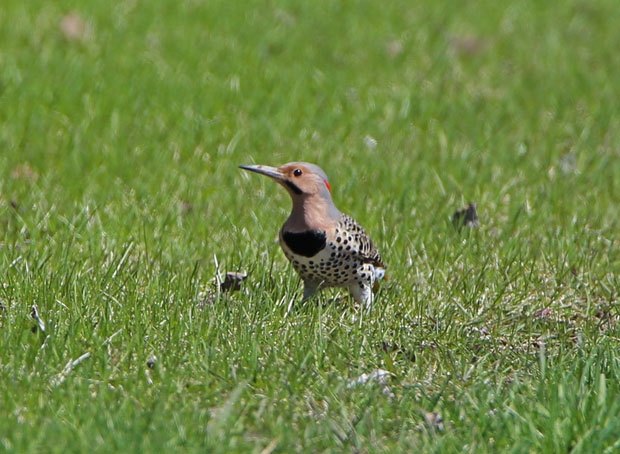
See “Reduce lawn and garden damage caused by moles, skunks and raccoons” for additional information on critter management. Are you still unsure of what is causing damage in your yard? Consider purchasing a wildlife camera or pointing a security camera at the spot since the first step in determining whether or what kind of response is needed is identifying the organism.
This work is supported by the Crop Protection and Pest Management Program [grant no 2024-70006-43569] from the USDA National Institute of Food and Agriculture. Any opinions, findings, conclusions, or recommendations expressed in this publication are those of the author(s) and do not necessarily reflect the view of the U.S. Department of Agriculture.



 Print
Print Email
Email